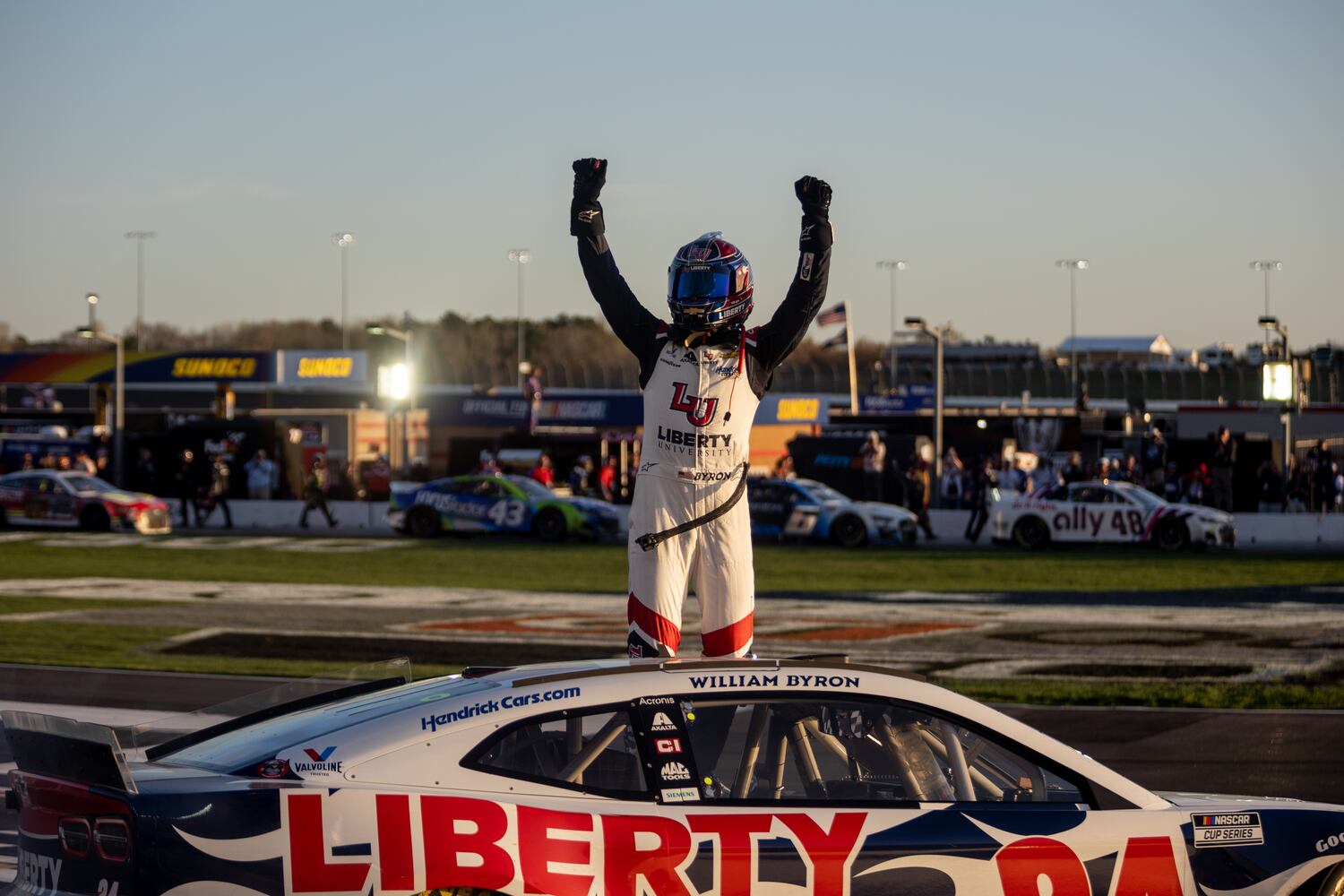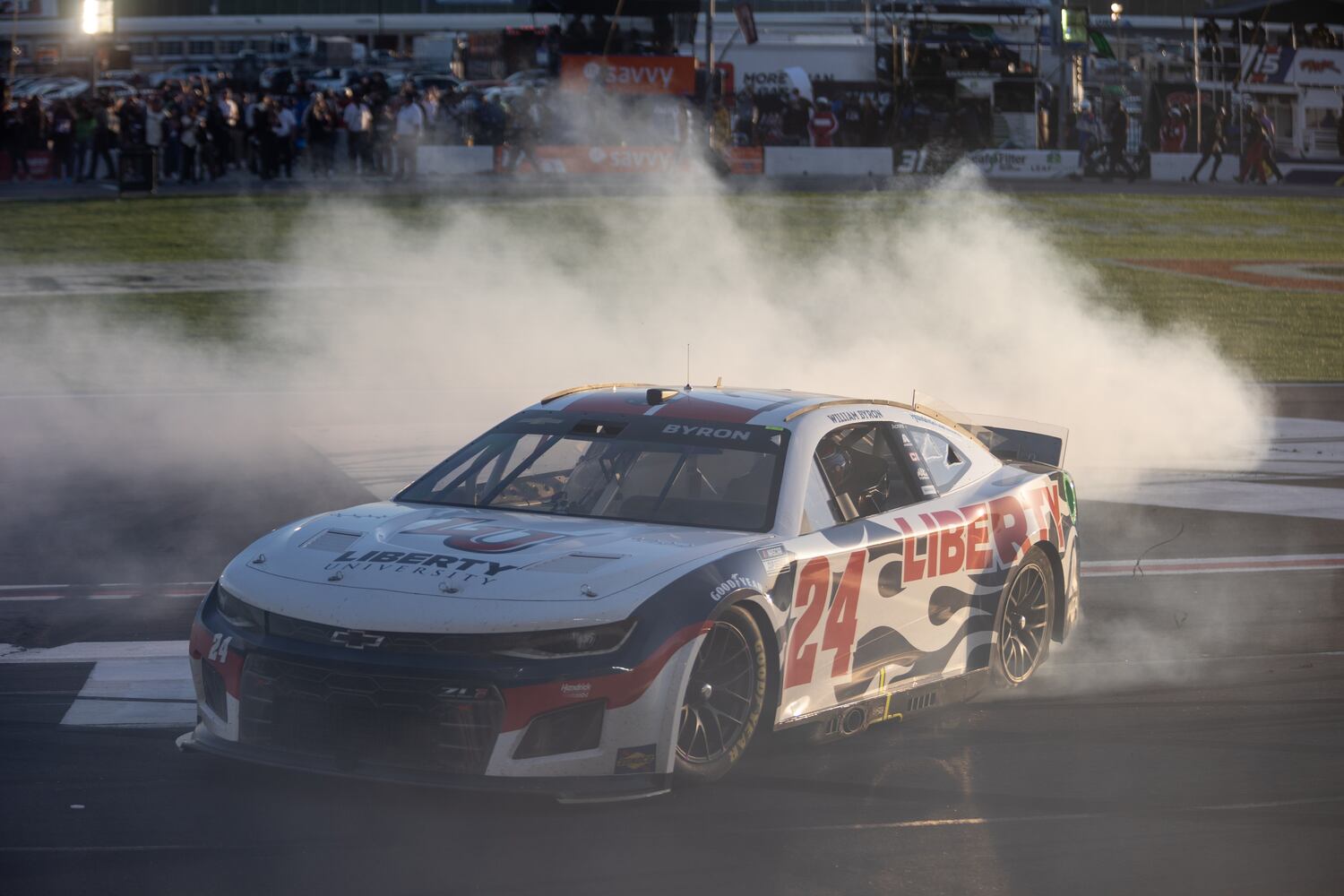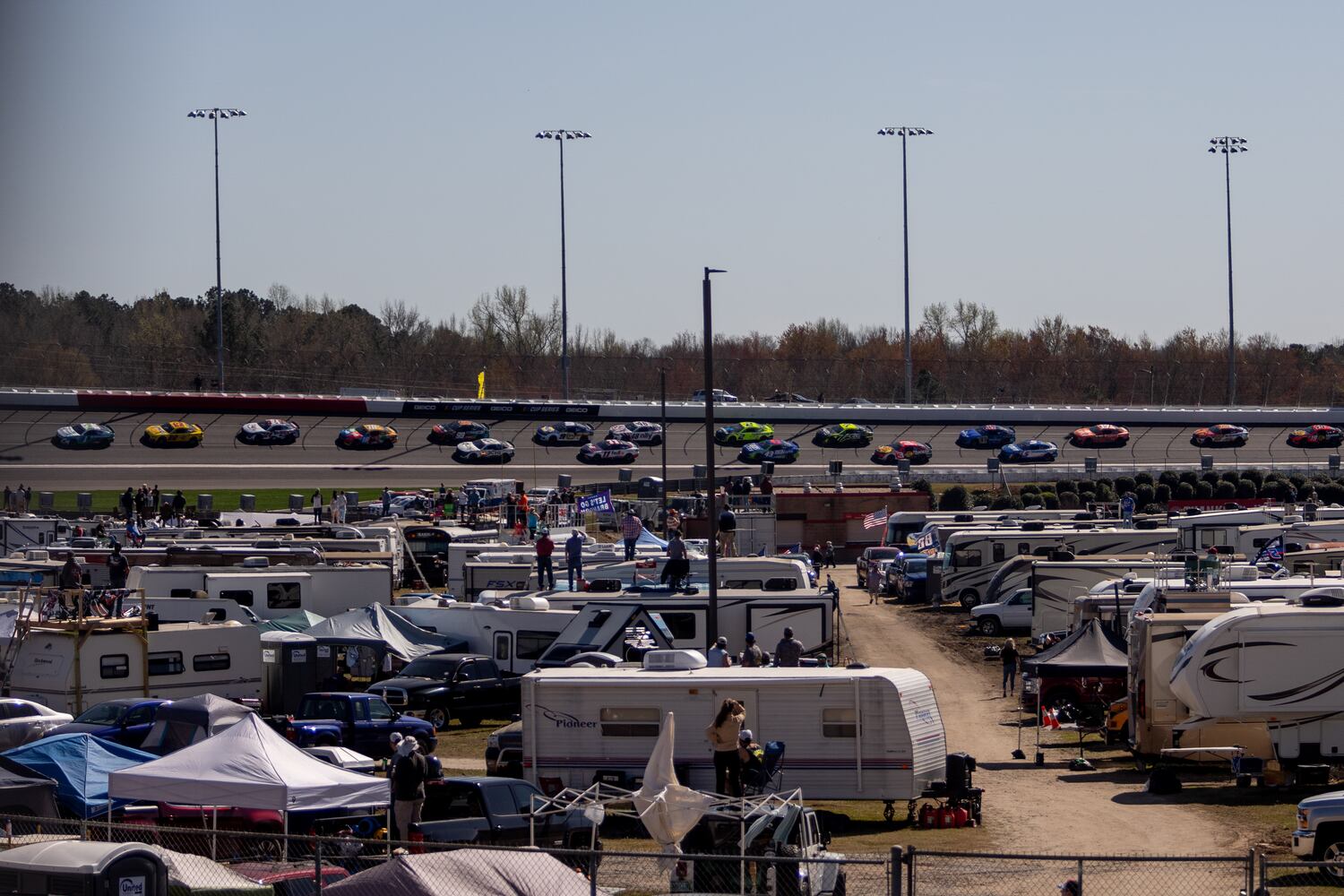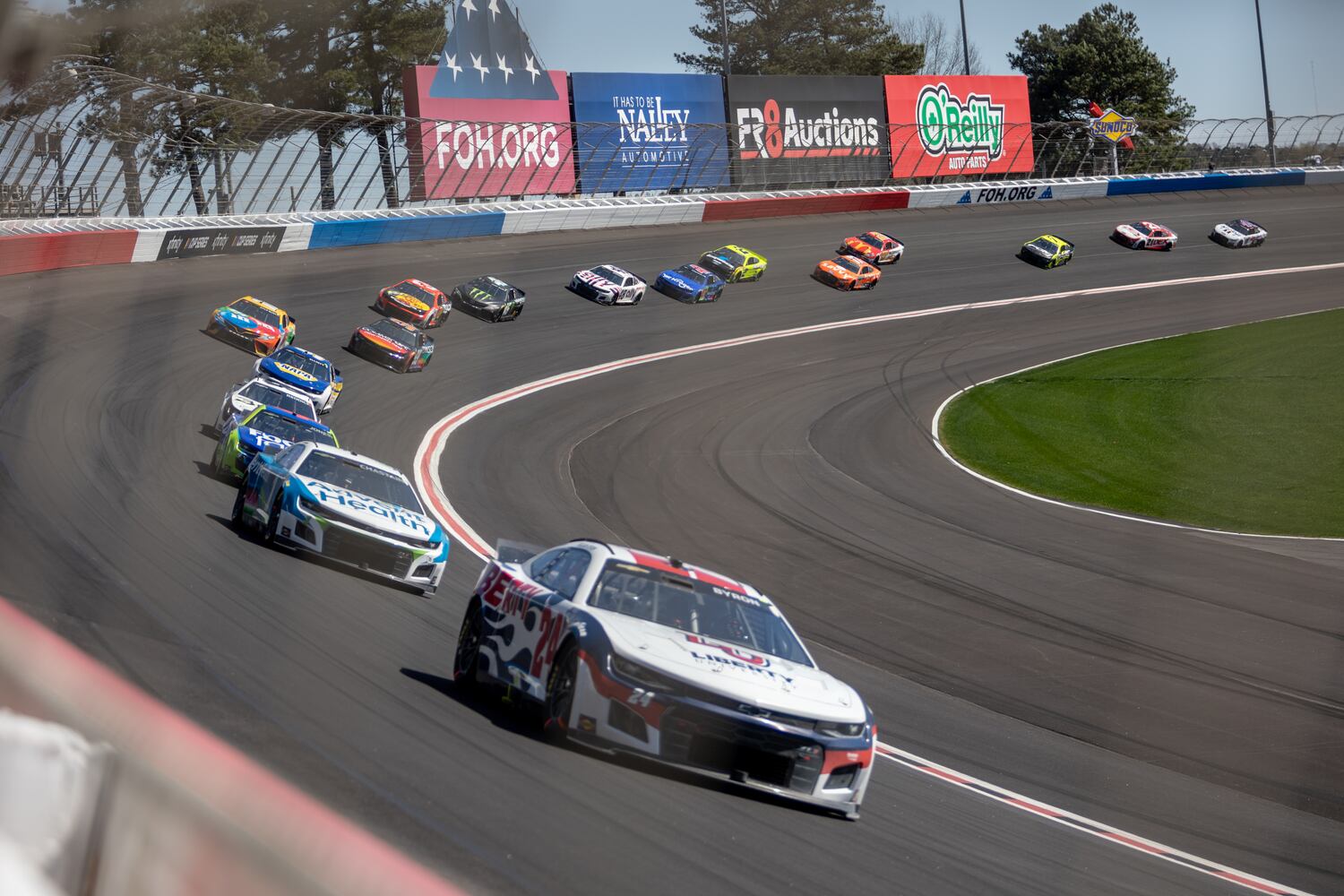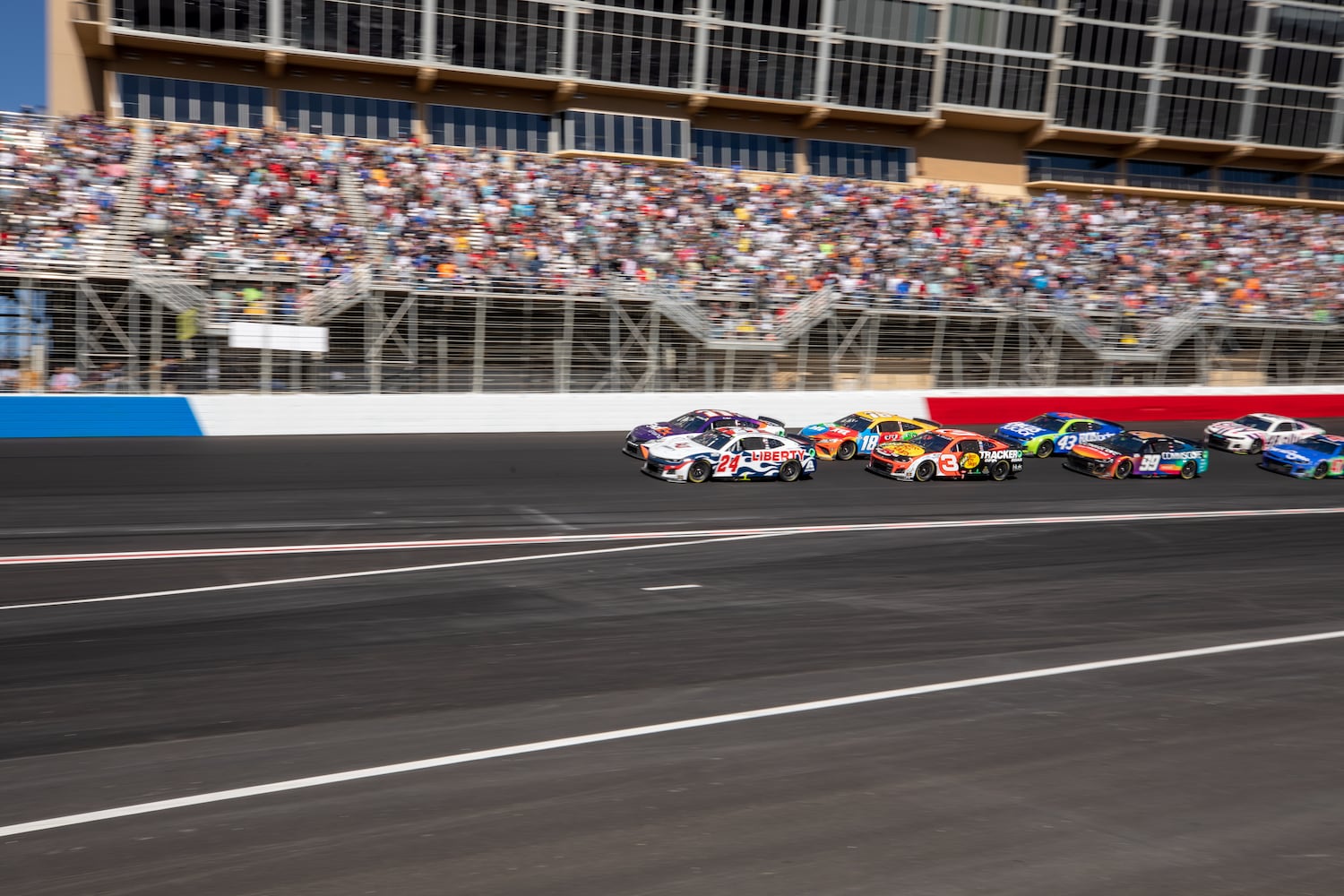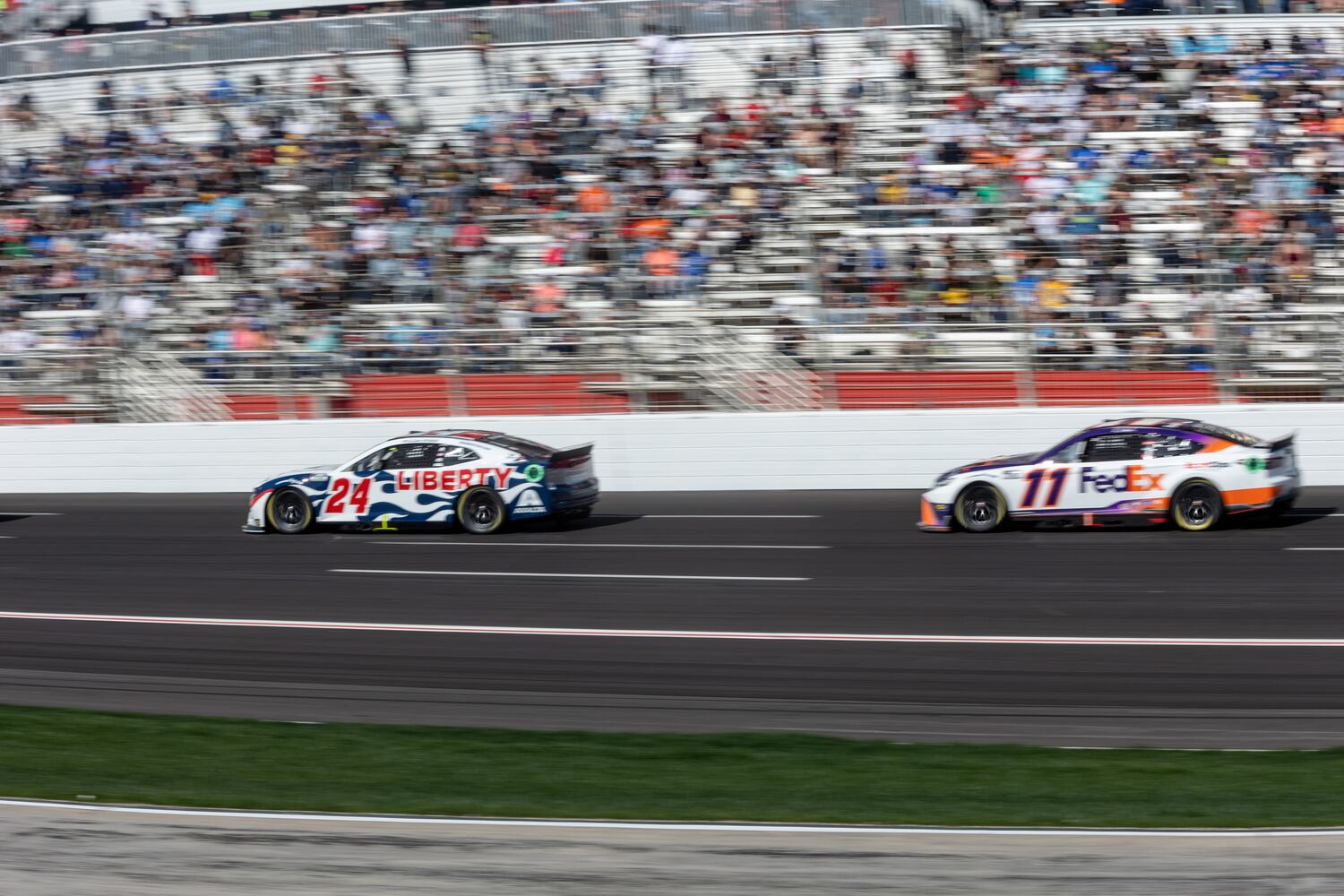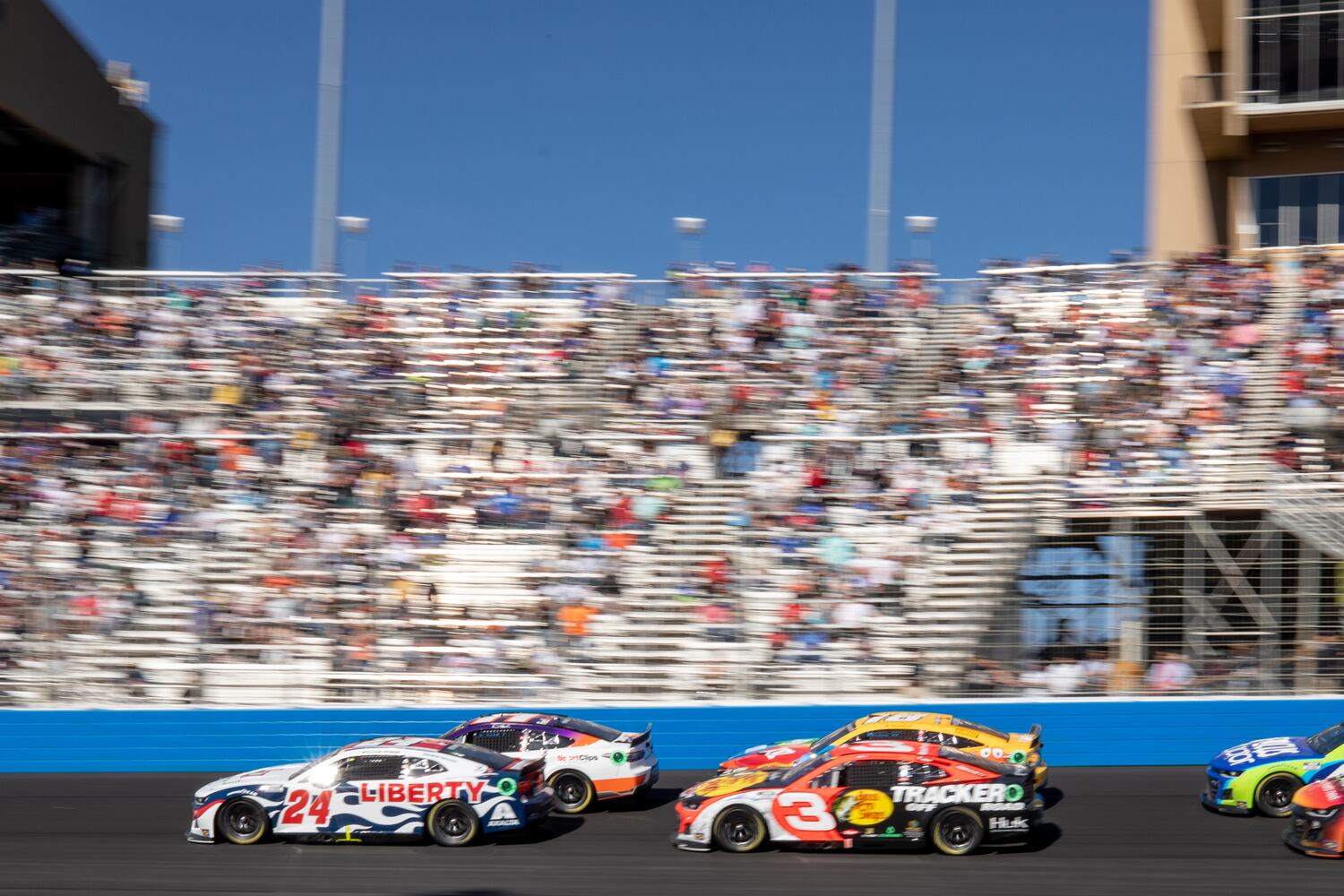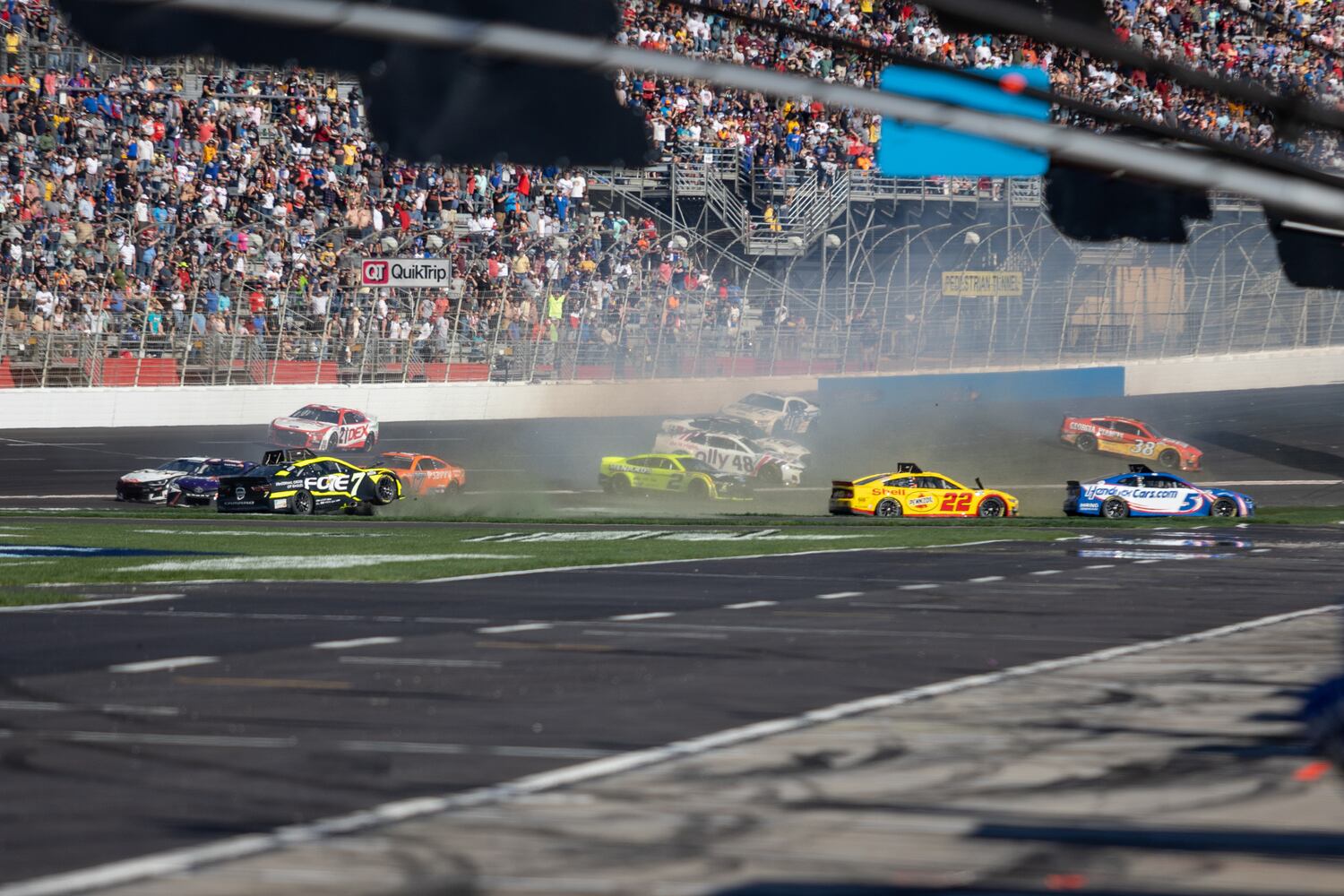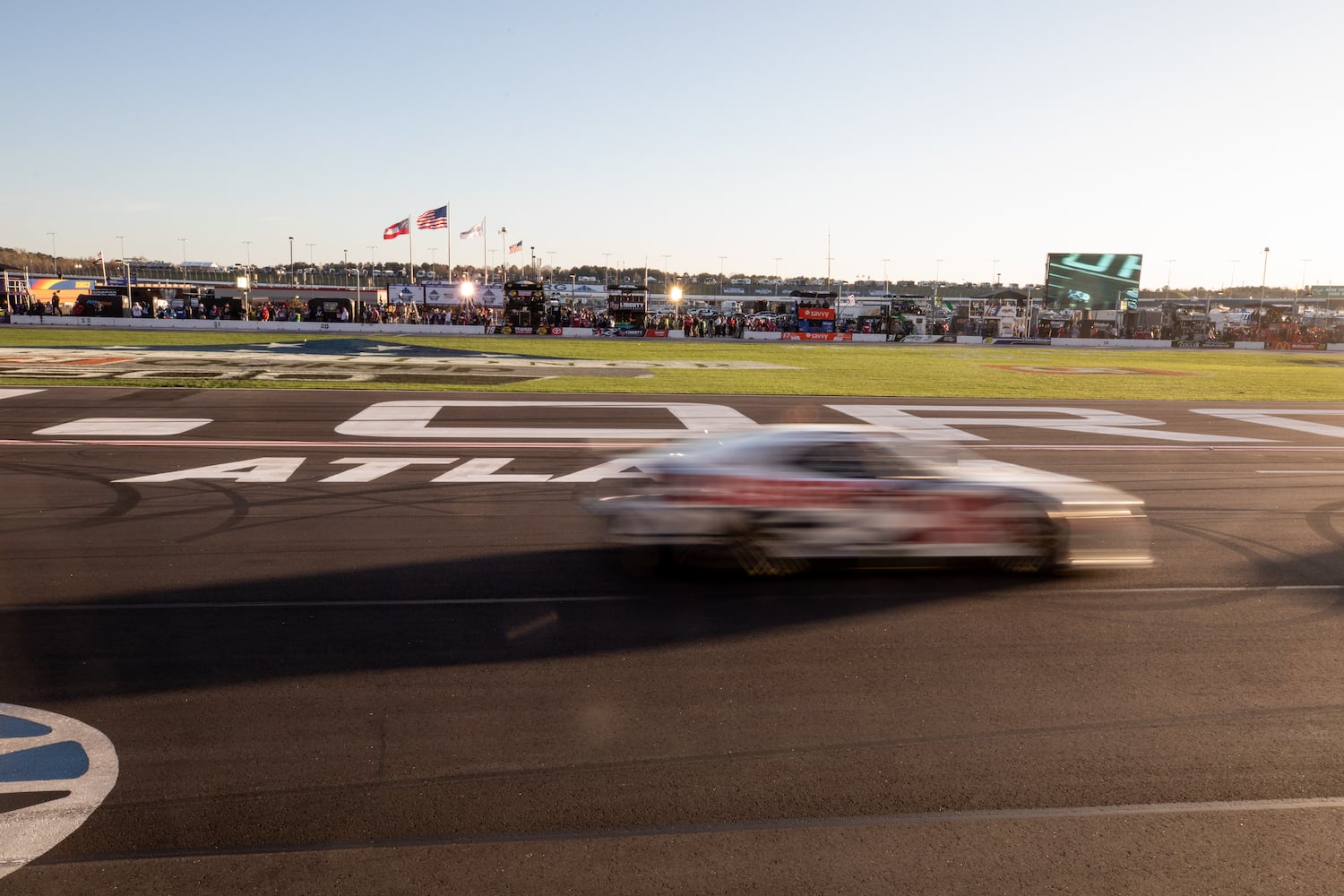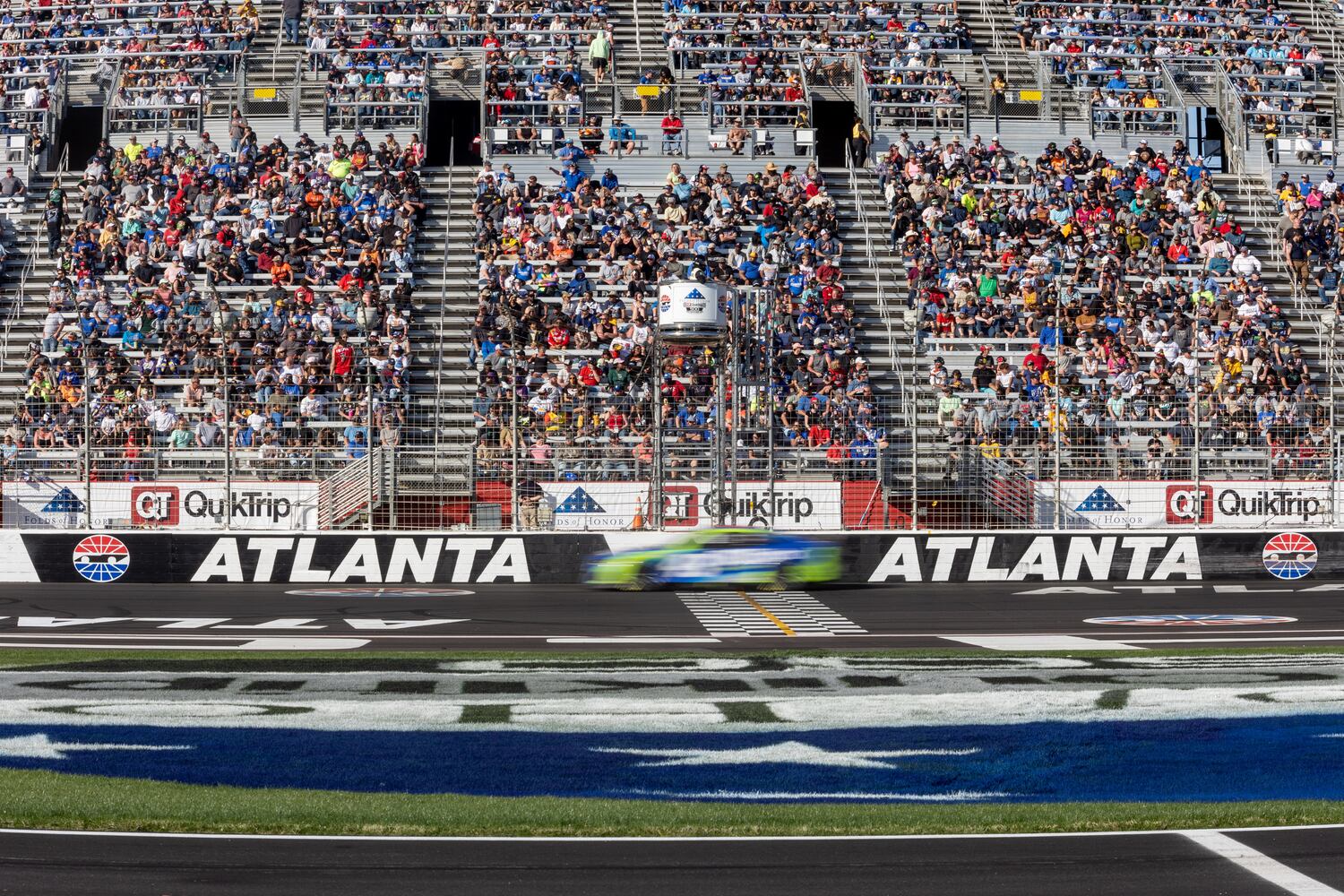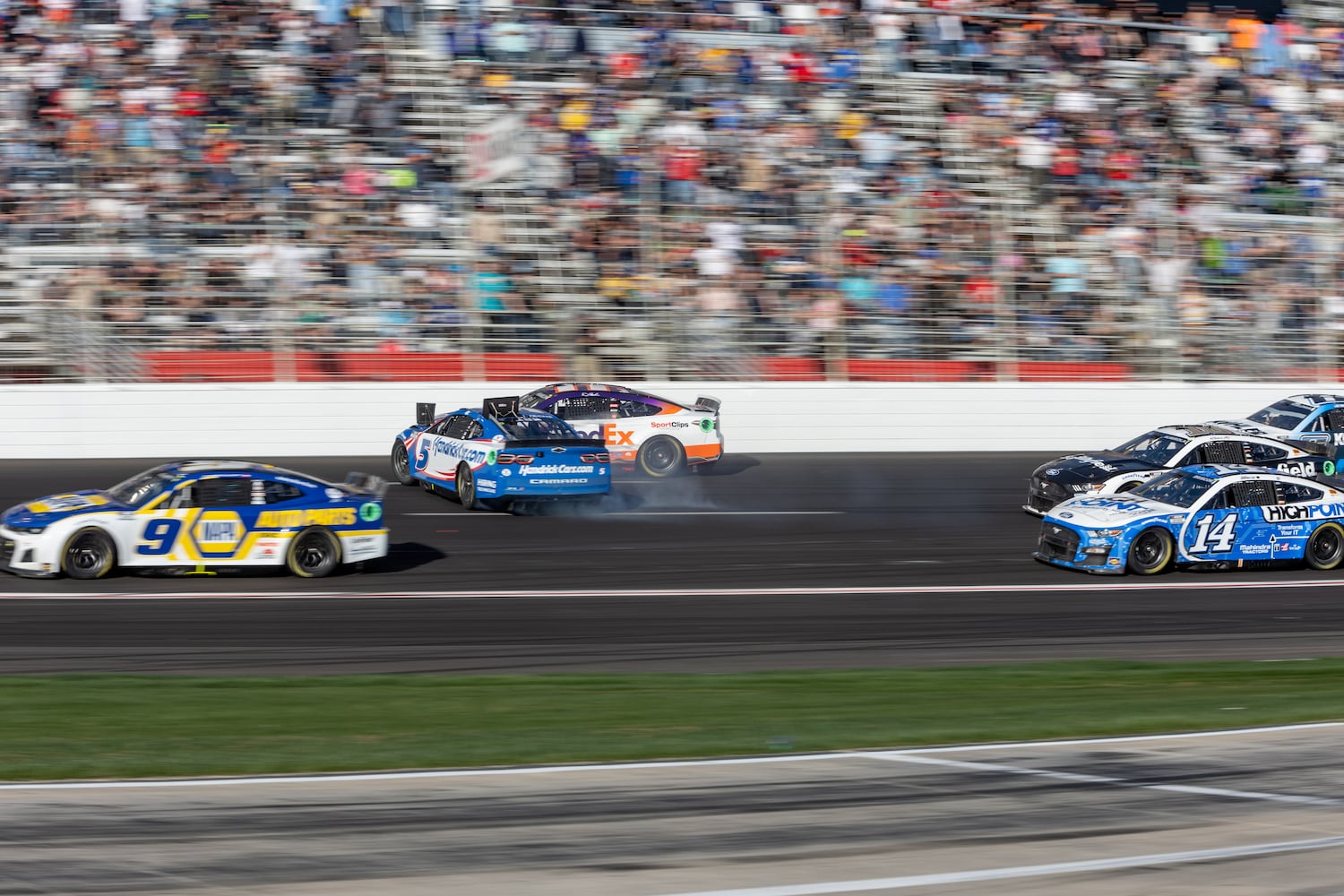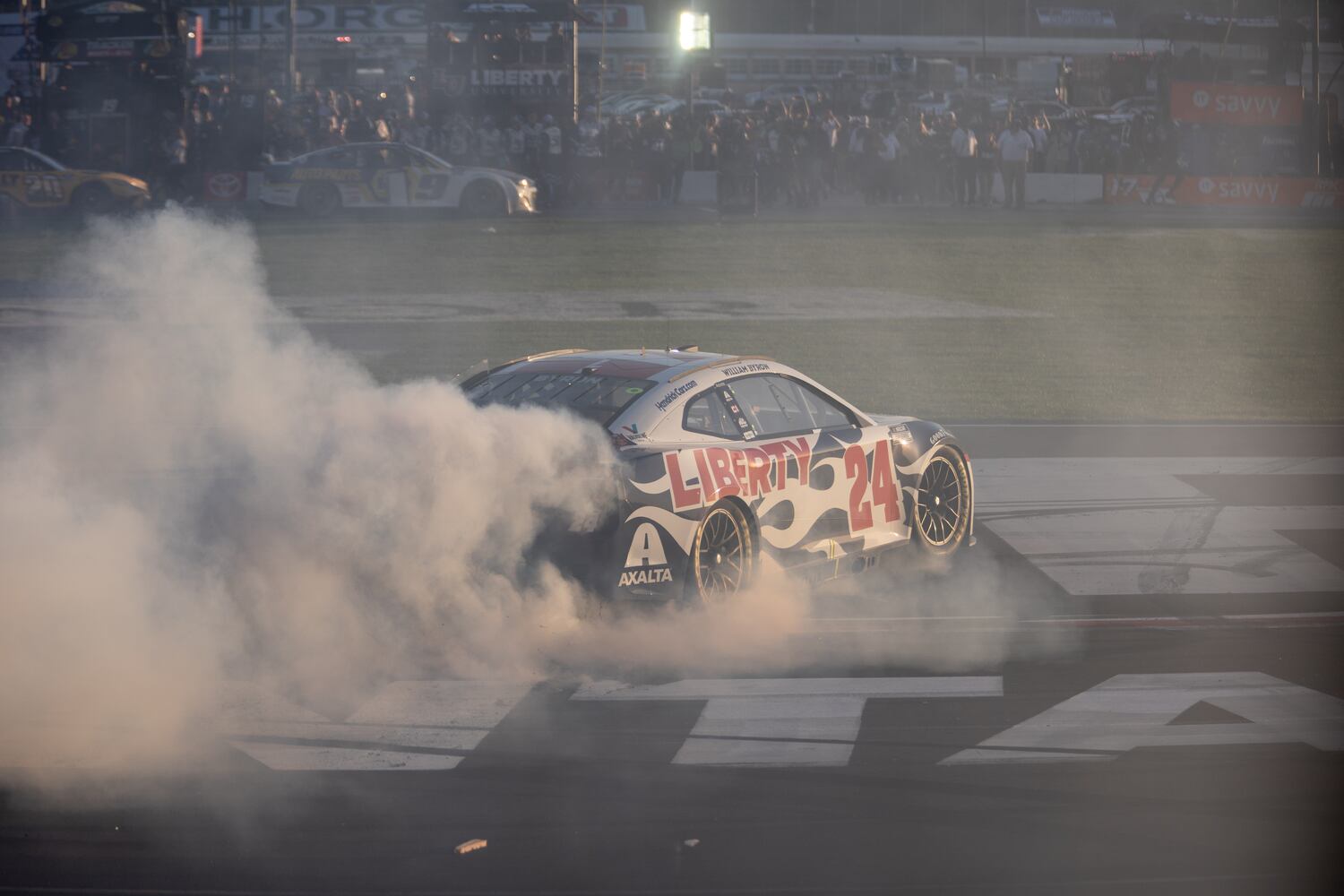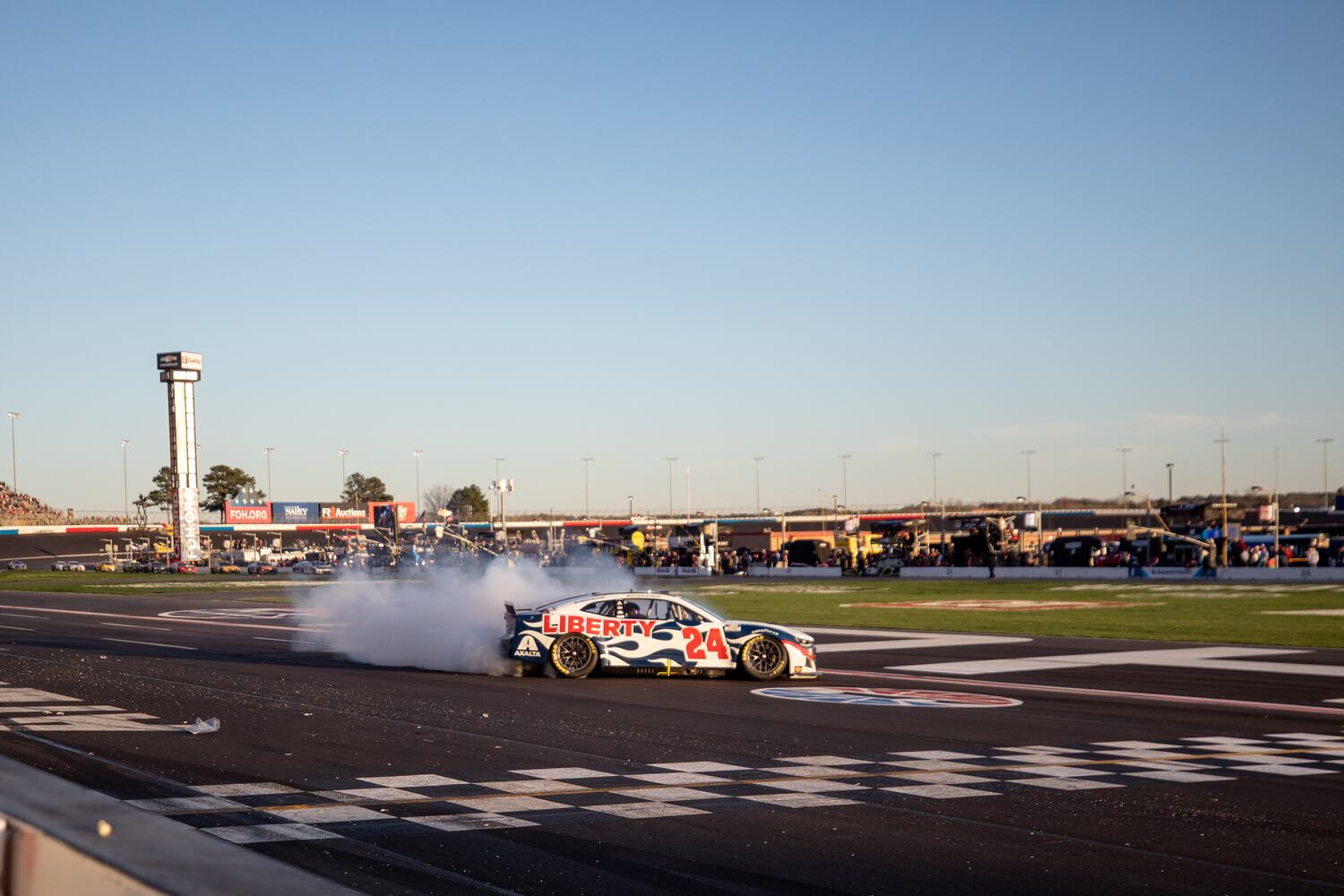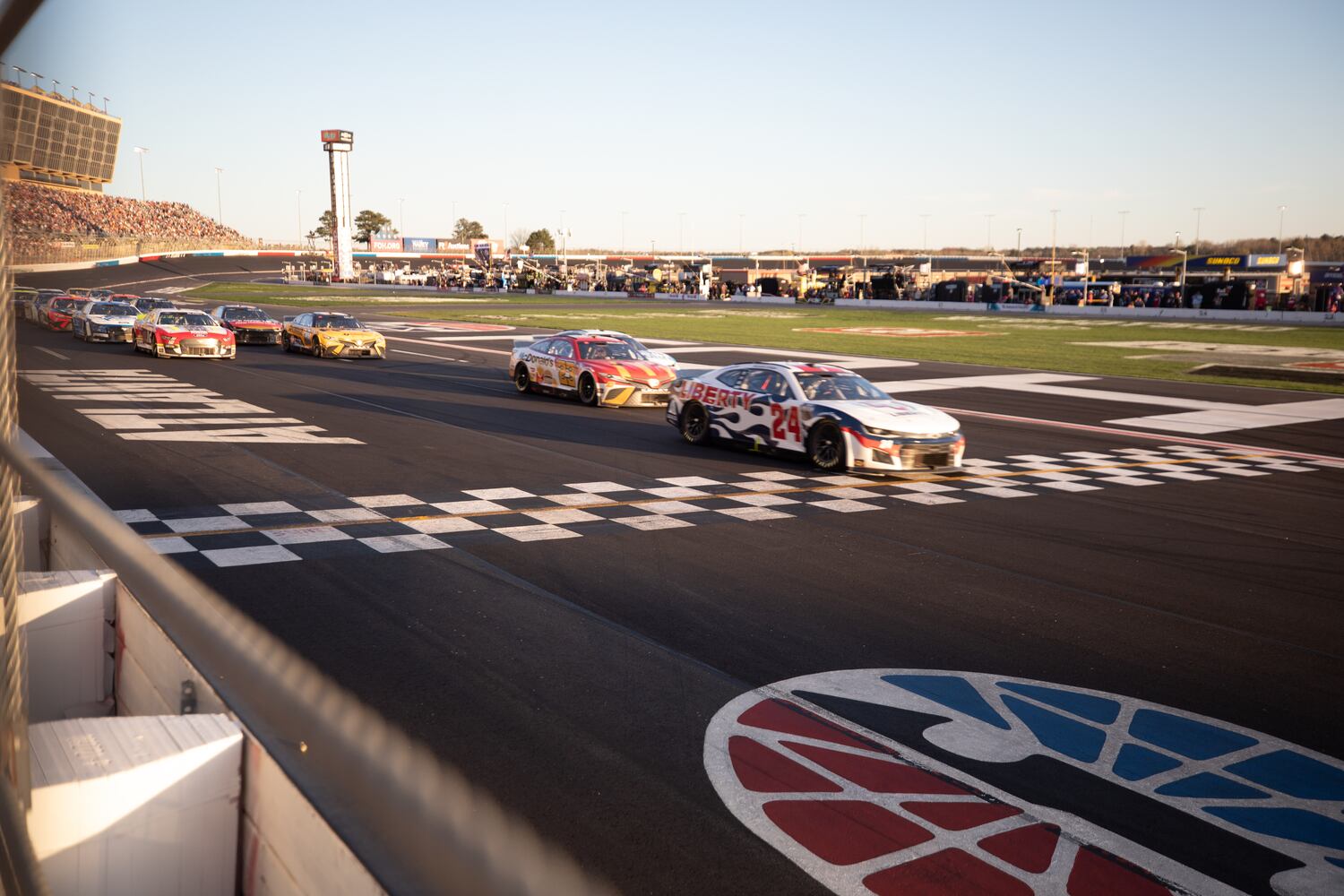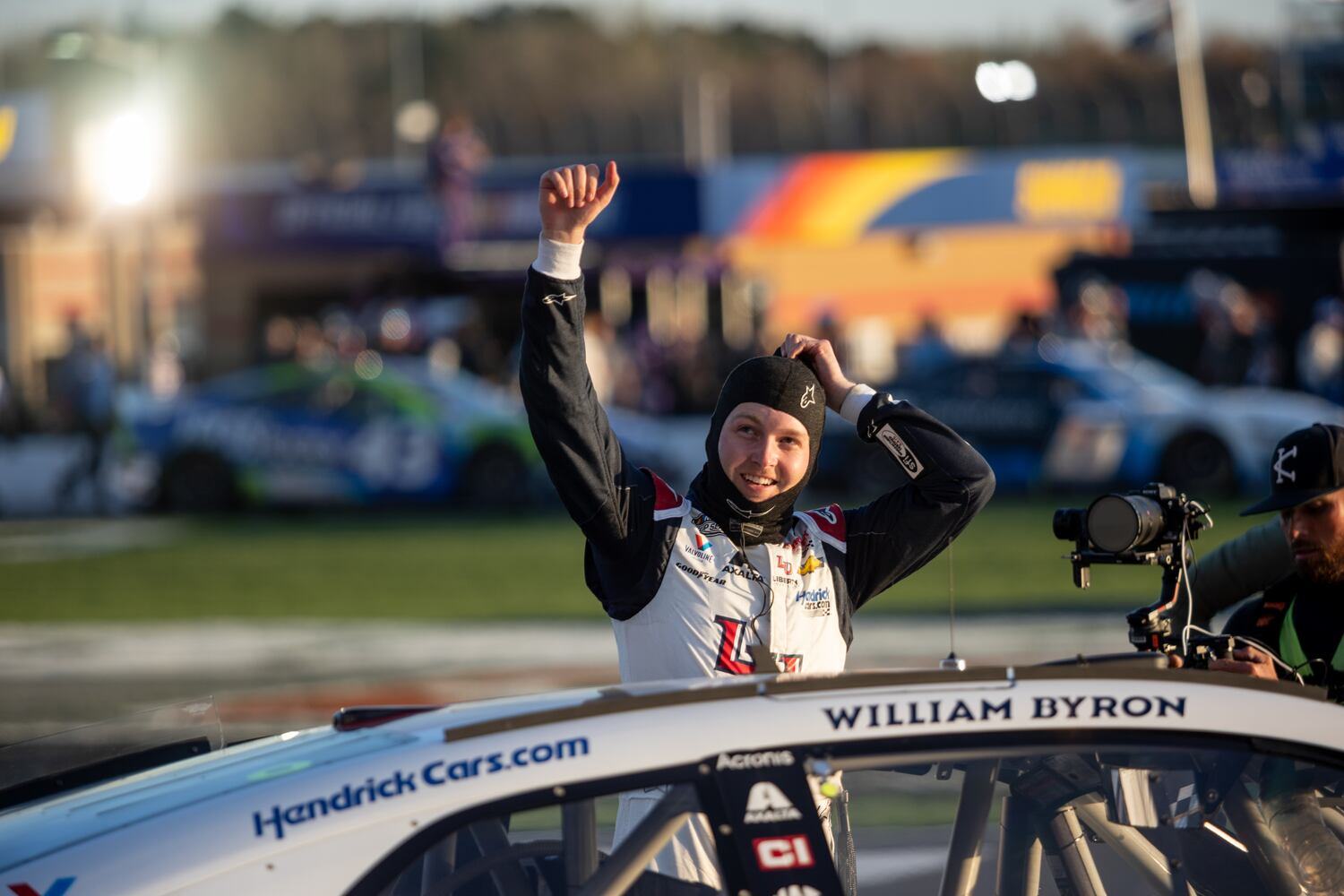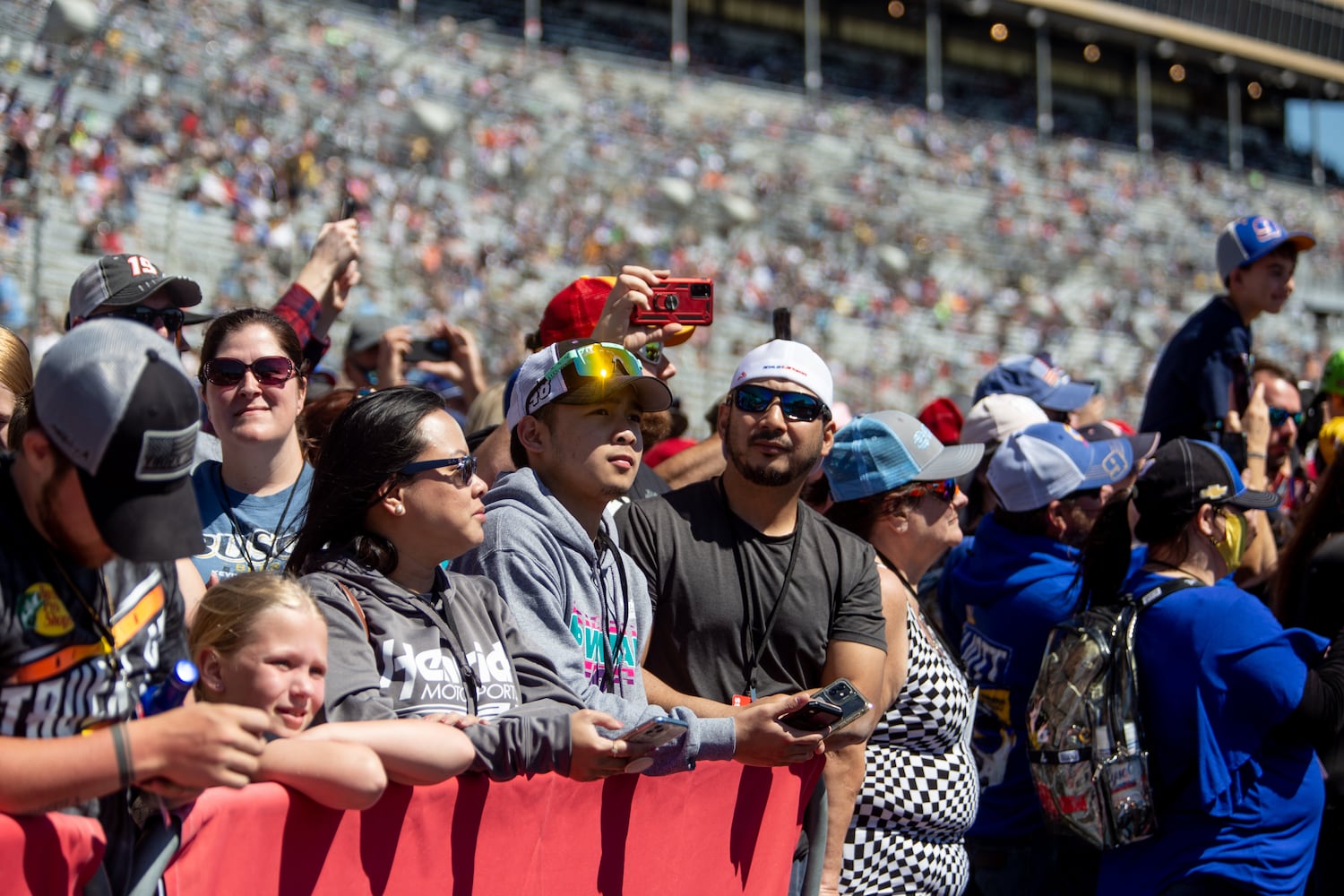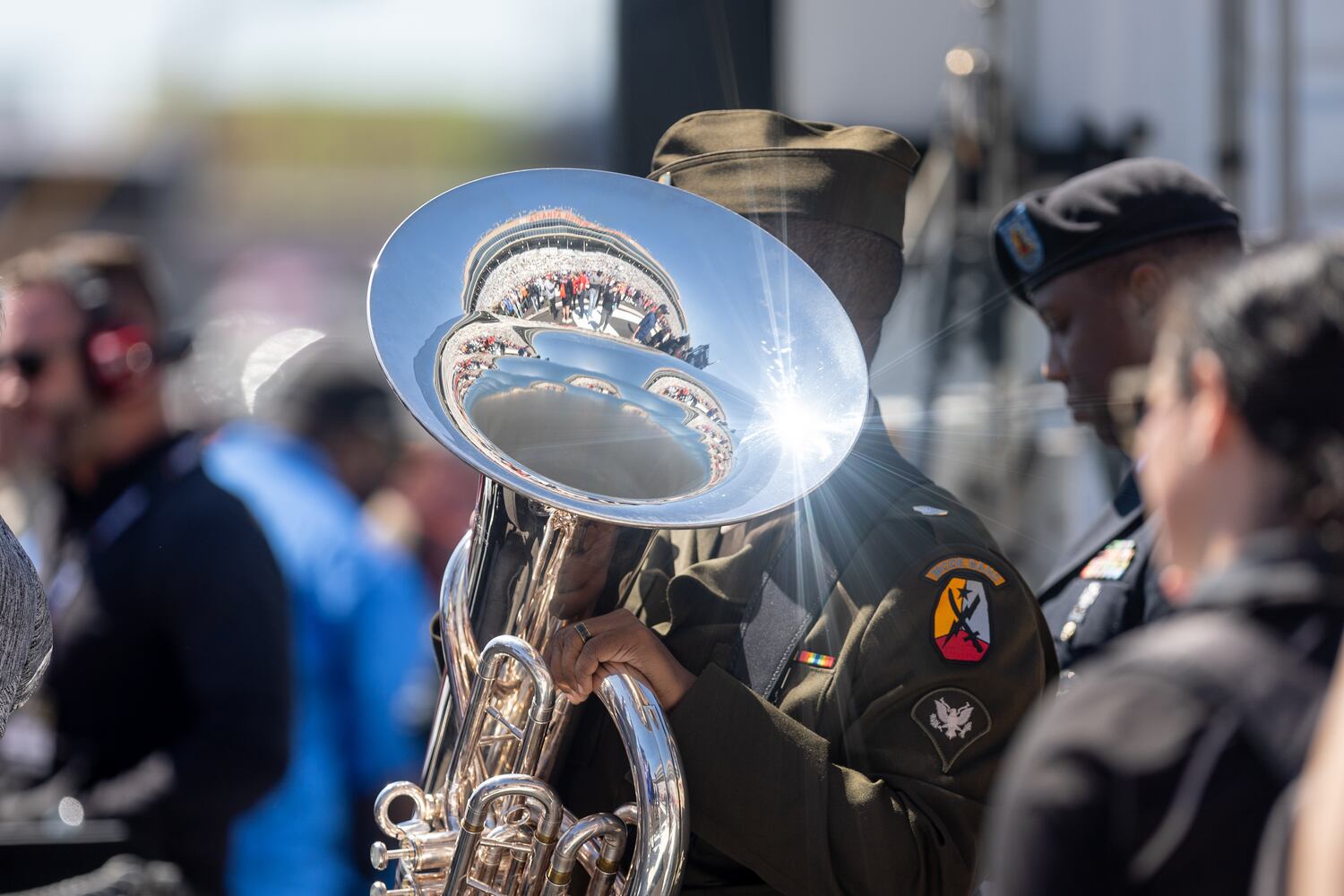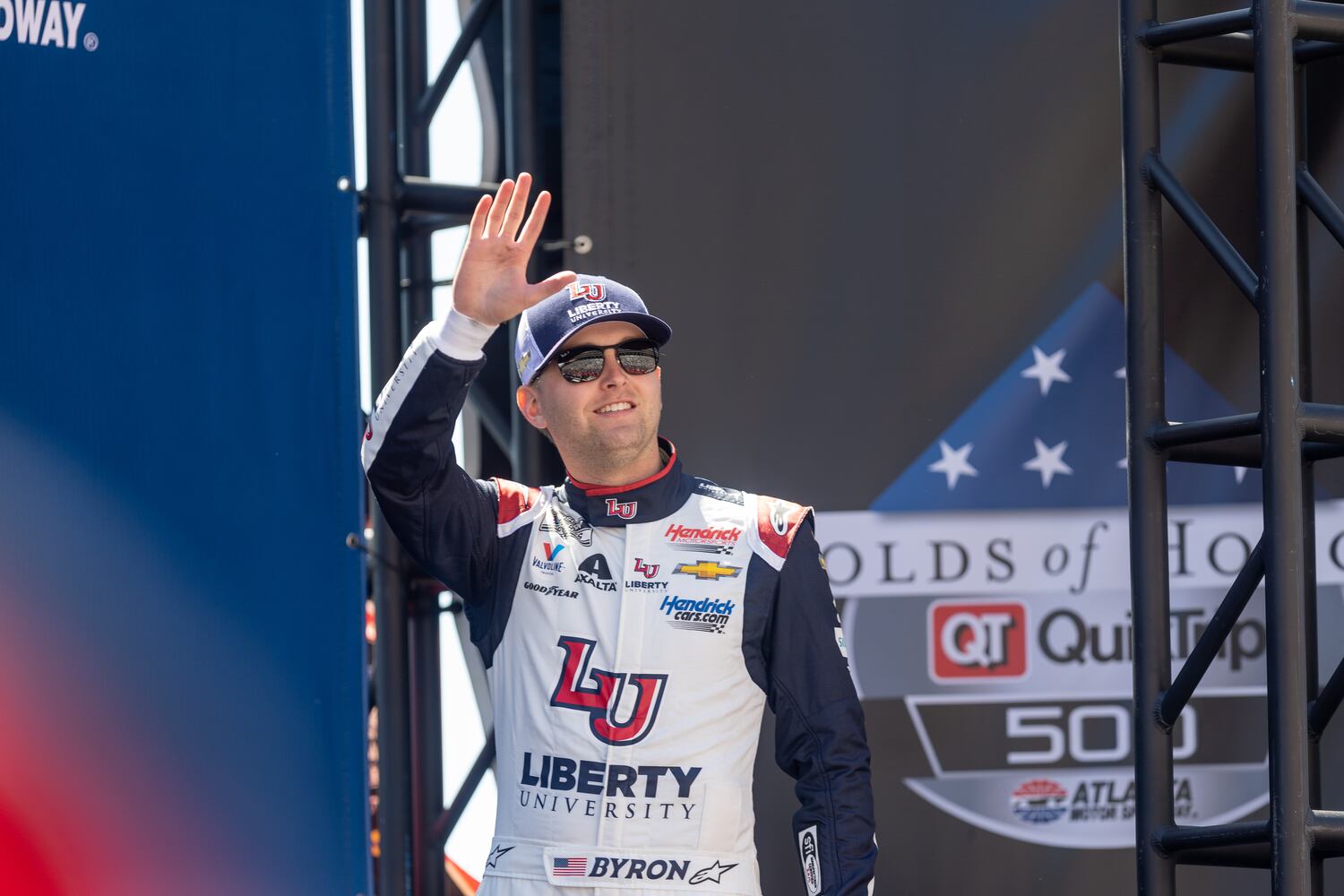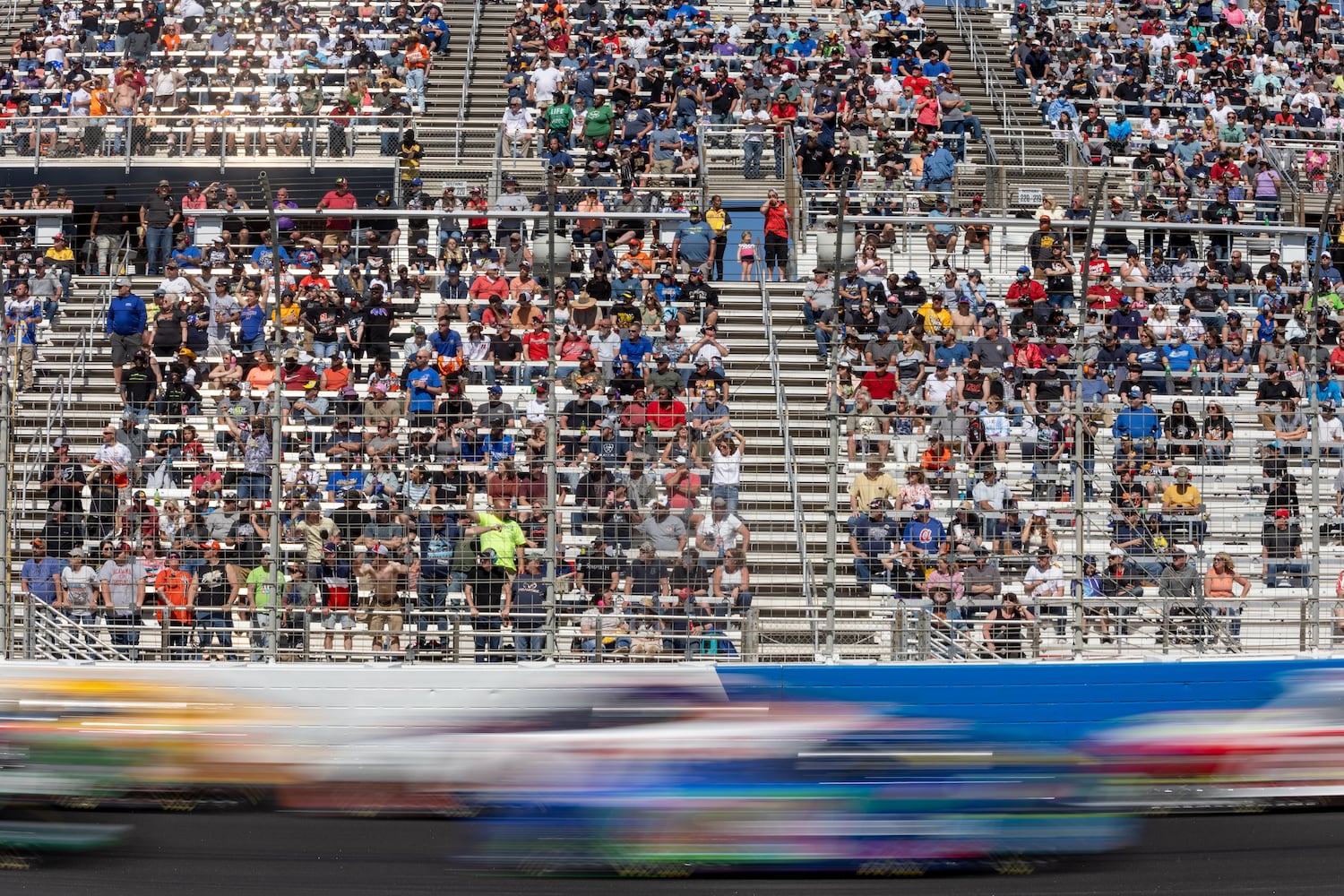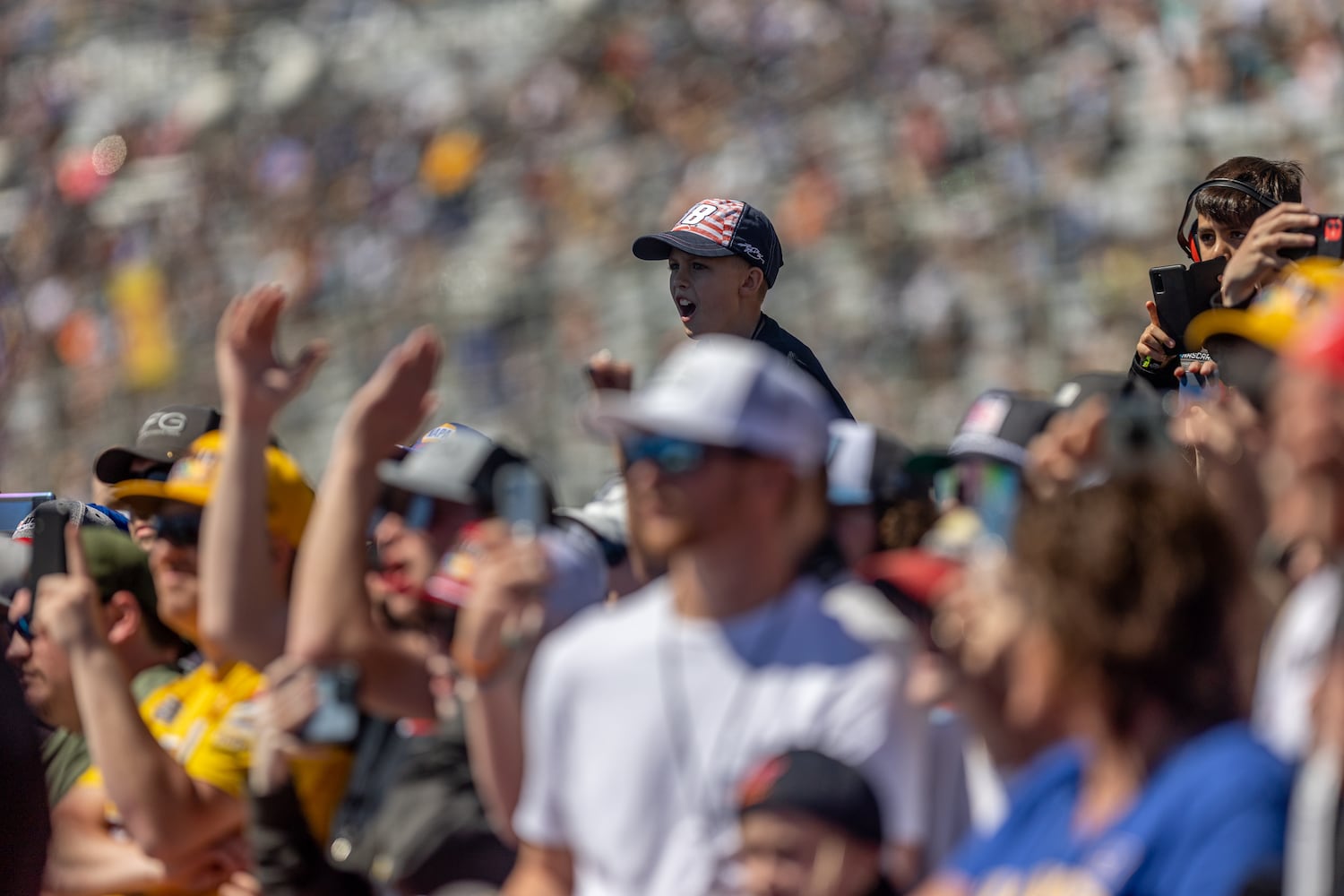HAMPTON — Watching Sunday’s race at the new-look Atlanta Motor Speedway, even the most hardened, dedicated codger would have to admit through clenched teeth: Sometimes change is good.
The Folds of Honor QuikTrip 500 – the singular NASCAR race that marries a noble charity to a bastion of gas station pizza – was ample proof. There’s plenty of carnival barker in the racing hierarchy, but sometimes the claims can accidentally collide with truth. Like the ones here about how a repave and reconfiguration of AMS would lead to more watchable racing.
An afternoon of tight, side-by-side, seat-puckering runs, lead changes in bulk, no shortage of twisted metal stunt work, a wild finish complete with a trio of cars crossing the line sideways was proof aplenty.
Why, this old place, which dates back to 1960, was looking downright young and hip with its black shiny, new pavement and its high-banked turns. I do believe AMS might have lost some weight and had a little Botox work done, too.
If you happened to win, well the new layout was simply peachy.
“Today was awesome obviously, we led a bunch of laps (91 of the 325 total), we felt we had the best car the way we could move through the field,” exulted William Byron. “Just awesome to win in the inaugural race at Atlanta in this style, always cool to do something like that.”
“I was shocked how crazy it was, how big the runs were,” Byron added. “It was like my spotter couldn’t talk fast enough to get in all the things you needed to say.”
The theme of change was all over Sunday’s race. The old guard of dominant drivers is giving way to a fresh batch of speed freaks. Byron, 24, is the fifth different winner in NASCAR’s first five races. Holding off the surviving cars – 30 of the 37 in the field were involved in some degree of crashing – grabbing the lead with 10 laps to go and bringing it home just in front of Ross Chastain, a Next Gen driver paired nicely with a Next Gen car.
The track redo may have taken any municipal highway department the better part of a lifetime to complete. But in only 163 days, the character of this place and races was forever changed.
In the past, Atlanta races could string out into single-file 180-mph parades, on long, long green flag runs. The worn track surface made tire wear and handling – not the sexiest of variables – paramount. (Tires still were an issue Sunday, blowouts leading to a couple chain-reaction issues, without a pitted surface to blame).
But Sunday went just like they told us it would, the redesign leading to superspeedway-type racing over a shorter 1.5-mile track. There was the bump-drafting and all the criminal tailgating that entails. Plenty of two-wide, and when the daredevil spirit moved the drivers, three-wide runs. And all the time the Fox cameras could train on the front of the race where the lead was changing hands like a bowling alley house ball rather than focus on the battle for 17th place while the leader ran unopposed.
Saturday’s Xfinity race pointed to the possibility of increased mayhem – there were a track-record 12 cautions in that race. Sure enough, the form held for the big race. Both of the early stages ended on a yellow flag following wrecks, and the finish was punctuated by a three-car spinout back in Byron’s wake.
Drivers who are proven superspeedway savants figure to do well here. Byron, for instance, is a former Daytona 500 champion. Bubba Wallace, who has a win and a second in his last two superspeedway races, was running up front Sunday until that mishap at the close.
Drivers aren’t great fans of the stresses involved in a setup like Atlanta. The old layout was so much easier on the nerves. “Daytona only has 200 laps for a 500-miler, this place has 325 of white-knuckle action. It was pretty wild out there,” said Kurt Busch.
Sunday’s runner-up had a particularly useful perspective, accepting AMS’s new profile while advocating for its scarcity.
“Now let’s have (this style of racing) here and Daytona and Talladega and not go repave every mile-and-a-half in the country,” Chastain said.
“This can be its own thing, and people can get excited about that. But if we got 28 degrees of banking at every mile-and-a-half – that’s not our future.”
Yes, change can be good. The National League can accept the designated hitter, Matthew McConaughey can rebrand himself a serious actor, Atlanta Motor Speedway can make itself into Superspeedway Lite and the world will continue to turn.
Keep Reading
The Latest
Featured
